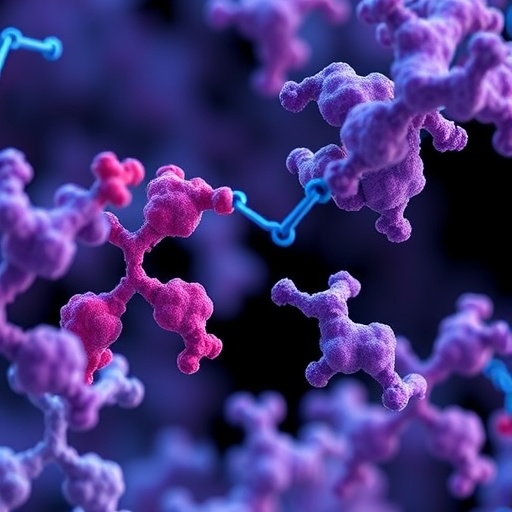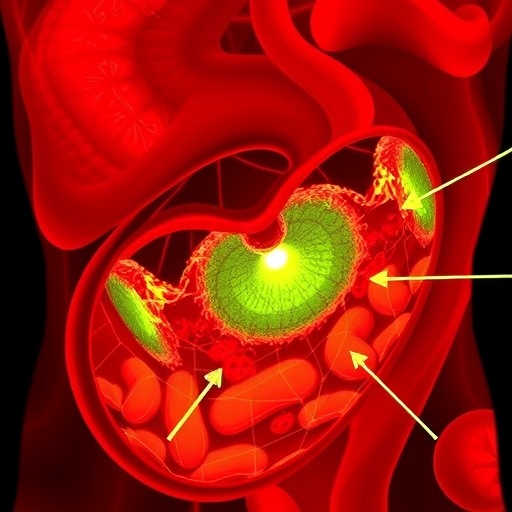
In the relentless pursuit of more effective cancer treatments, one of the greatest challenges has been the development of targeted therapies capable of selectively eradicating tumor cells while sparing healthy tissues. Recently, a groundbreaking study has illuminated a promising new avenue for tackling solid tumors characterized by low levels of mesothelin expression. This receptor, often overexpressed in various malignancies, has long been considered a viable target for anti-cancer therapeutics, yet its heterogeneous presence across tumor types and even within tumors themselves has hindered the effectiveness of existing approaches. The team led by Wang, Yan, and Li presents an innovative strategy: mesothelin-directed protein-drug conjugates designed specifically to engage and destroy mesothelin-low tumor cells with unprecedented precision and potency.
The central innovation presented in this new research hinges on the design of specialized protein-drug conjugates capable of binding to mesothelin with high affinity, yet engineered with sufficient flexibility and sensitivity to recognize and act upon tumors presenting relatively modest receptor densities. Earlier therapeutic attempts, restricted largely to cancer cells expressing high mesothelin levels, fell short because they failed to address the more challenging but clinically prevalent scenario where expression is heterogeneous or low. This study meticulously dissects the biochemical architecture of these conjugates, revealing a sophisticated interplay between the targeting moiety and the functional payload which, when combined, act synergistically to overcome tumor evasion mechanisms.
Conceptually, protein-drug conjugates represent a fusion of biologics and small-molecule therapeutics. The protein component offers specificity to the target antigen—in this case, mesothelin—while the conjugated drug is the cytotoxic element delivered directly to the malignant cells. The crux of success lies in optimizing the linker chemistry, payload selection, and conjugation site to maximize therapeutic indices and minimize off-target toxicity. The researchers report that through careful molecular engineering, they have achieved a conjugate that not only binds stably under physiological conditions but also triggers efficient internalization and release of its cytotoxic cargo within the targeted cancer cells.
.adsslot_5EbFtR7O0f{width:728px !important;height:90px !important;}
@media(max-width:1199px){ .adsslot_5EbFtR7O0f{width:468px !important;height:60px !important;}
}
@media(max-width:767px){ .adsslot_5EbFtR7O0f{width:320px !important;height:50px !important;}
}
ADVERTISEMENT
One of the remarkable aspects of this work is its applicability to a broad range of solid tumors that exhibit variable mesothelin expression, including notoriously difficult-to-treat cancers such as pancreatic adenocarcinoma, ovarian carcinoma, and certain lung cancers. By capitalizing on this therapeutic window, the conjugates can potentially bridge the gap between highly aggressive tumors with pronounced biomarker presence and those subtler but no less insidious malignancies. This advancement is poised to reshape the landscape of targeted cancer therapy by introducing a modality that effectively navigates the heterogeneity that complicates clinical outcomes.
Detailed mechanistic studies demonstrate that the mesothelin-targeted conjugates induce apoptotic pathways selectively in tumor cells, with minimal induction of cytotoxicity in normal mesothelin-negative cells. This tumor-selective killing is achieved through a fine balance of binding affinity and intracellular trafficking that ensures the drug payload is activated only upon engagement with mesothelin-positive cells. Such precision in targeting reduces systemic toxicity and could translate into improved tolerability profiles compared to existing chemotherapeutic regimens.
Beyond preclinical cell models, the research employs sophisticated in vivo systems that mirror the human tumor microenvironment, providing compelling evidence of potent anti-tumor efficacy. Tumor-bearing animal models treated with these conjugates show significant tumor regression and prolonged survival without notable adverse effects commonly associated with conventional chemotherapy. This translational leap underlines the therapeutic promise harbored by protein-drug conjugates against tumors previously considered refractory or marginally responsive to treatment.
The innovation extends into the clever use of linker molecules designed to be stable in the bloodstream yet cleaved selectively within the lysosomal compartments of target cells. This smart activation mechanism prevents premature drug release, thereby safeguarding healthy tissues from unintended exposure. The conjugates leverage intracellular enzymatic activity unique to the cancerous milieu, ensuring that the cytotoxic payload is unleashed precisely where it is required most.
Crucially, the study also explores resistance mechanisms that tumors might deploy against protein-drug conjugates. The authors elucidate strategies by which tumor cells attempt to downregulate mesothelin or alter endocytic pathways to evade conjugate-mediated killing. By anticipating these adaptations, the molecular design incorporates aspects that can counteract or delay resistance, including modifications to the drug payload or combining the conjugates with immune modulators to enhance anti-tumor immunity.
The implications of this work extend beyond mesothelin-low tumors. The modularity of protein-drug conjugates suggests a versatile platform adaptable to other tumor antigens with similarly challenging expression profiles. This could inaugurate a new generation of precision medicine tools that tailor treatment not only to tumor type but also to the nuanced expression gradients of surface markers, a significant advancement over the binary presence-or-absence targeting strategies currently in clinical use.
From a clinical perspective, mesothelin-directed protein-drug conjugates could fill a critical void in the oncology therapeutic arsenal, especially for patient populations with limited options due to intrinsic tumor biology. Their capacity to selectively target elusive mesothelin-low cells opens doors to combination therapies, where such conjugates could be synergized with checkpoint inhibitors, chemotherapy, or radiation to orchestrate a multi-pronged assault on cancer.
In terms of drug development, this study sets a new standard for rational design of antibody-like therapies by integrating structural biology, medicinal chemistry, and translational oncology. The comprehensive characterization of pharmacodynamics and pharmacokinetics presented offers valuable insights for optimizing dosing regimens and minimizing adverse effects, paving the way for successful clinical trials. Such rigor and depth signal a strengthened confidence that these conjugates will perform effectively in human patients.
Moreover, the molecular versatility demonstrated by these protein-drug conjugates suggests potential applications beyond oncology. The capacity to deliver potent payloads selectively to cells expressing low levels of a given target could inspire treatments for infectious diseases, autoimmune disorders, and other pathologies where cell-specific targeting is crucial yet technically challenging.
The study also raises stimulating questions for future research directions, particularly regarding the interplay between tumor microenvironment heterogeneity and therapeutic efficacy. Understanding how stromal components, immune infiltrates, and extracellular matrix affect conjugate distribution and drug release is pivotal for refining this approach. The authors advocate for integrated approaches combining advanced imaging, single-cell analysis, and bioinformatics to further elucidate these complex dynamics.
Importantly, the carefully crafted experimental design and use of relevant tumor models underscore the viability of this mesothelin-directed approach. The encouraging results provide strong impetus for expedited progression toward clinical testing. Given the substantial unmet medical need in mesothelin-expressing solid tumors, such therapies could revolutionize patient outcomes and shift prevailing paradigms in oncology.
In summary, the development of mesothelin-targeted protein-drug conjugates tailored to treat mesothelin-low solid tumors represents a significant leap forward in targeted cancer therapy. By surmounting previous barriers posed by heterogeneous antigen expression, this novel therapeutic design exemplifies the power of precision engineering at the interface of molecular biology and pharmacology. As this research advances toward clinical application, it holds promise to not only extend survival but also improve quality of life for patients burdened by some of the most aggressive and treatment-resistant solid tumors.
Subject of Research: Mesothelin-targeted protein-drug conjugates for treating mesothelin-low expressing solid tumors.
Article Title: Mesothelin-directed protein-drug conjugates for mesothelin-low solid tumor therapy.
Article References:
Wang, Y., Yan, J., Li, L. et al. Mesothelin-directed protein-drug conjugates for mesothelin-low solid tumor therapy.
Nat Commun 16, 7889 (2025). https://doi.org/10.1038/s41467-025-63269-6
Image Credits: AI Generated
Tags: advanced drug delivery systemscancer cell eradication techniquesheterogeneous tumor expression challengesinnovative cancer treatment approacheslow mesothelin expression in cancermesothelin-targeted cancer therapyprecision medicine in oncologyprotein-drug conjugates for tumorsreceptor density in tumor biologyselective tumor targeting strategiestargeted therapies for solid tumors





